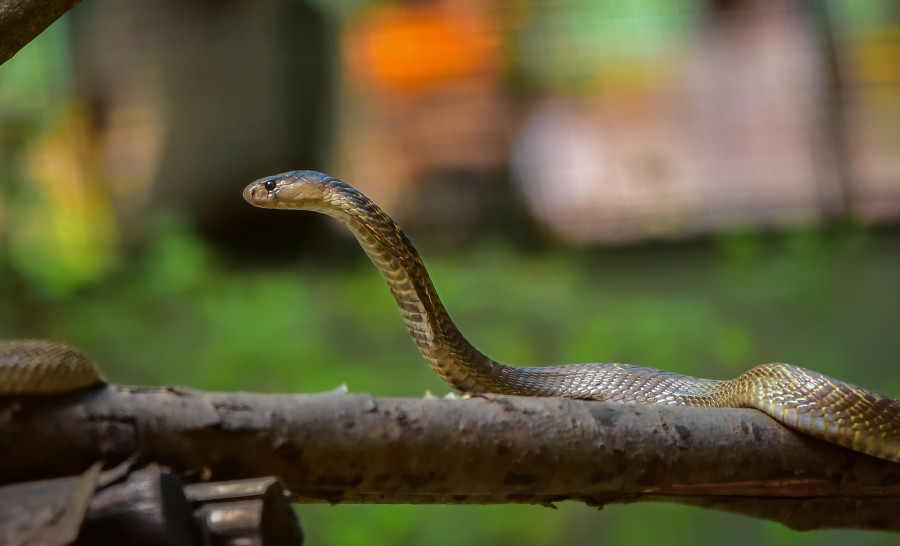Climate & Environment
As temperatures start rising, so does the risk of snakebite incidents
Study shows around 2,700 people die from snakebite every year in Tarai alone. Around 80 percent of snakebite victims die before reaching hospitals
Post Report
As daytime temperatures start rising, concerns grow over the risk of snakebites.
Health officials say that snakes wake up from brumation for food and water when the temperature rises. Brumation is similar to hibernation, a dormant period for reptiles.
“Most of the snakebite incidents occur during spring, summer and autumn seasons,” said Dr Hemanta Chandra Ojha, an official at the Epidemiology and Disease Control Division.
“What concerns us is that snakebite incidents have been rising every year and could rise further in the coming months, given the long drought and possible rise in temperatures.”
Incidents of snakebite and resulting deaths are common in Nepal, but the issue still remains grossly neglected as what experts call a lurking ‘invisible crisis’.
Each year, around 2,700 people, mostly children and women from Nepal’s Tarai region, die of snakebites, according to a March 2022 report.
The report—‘Snakebite epidemiology in humans and domestic animals across the Tarai region in Nepal: A multi-cluster random survey’—was prepared jointly by a cohort of international experts, including from Nepal’s BP Koirala Institute of Health Sciences, and was published in The Lancet, a leading international medical journal.
According to the data provided by the Zoonotic and Other Communicable Disease Control Section at the Epidemiology and Disease Control Division, as many as 1,229 snakebite incidents were recorded in the fiscal year 2022-023, up from 926 in the previous fiscal.
Officials say most of the victims were women and children bitten by snakes either while working on the field or playing out in the open. They say that small children are at risk of dying from snakebites, as they often do not inform their parents after getting bitten for fear of being scolded for playing in the bushes.
People living in thatched-roof houses are also highly vulnerable to snakebite, as snakes visit such homes in search of rats.
Experts say awareness drives should be launched to keep the house and surroundings clean, prevent children from playing in bushes, avoid walking during the night, and use torchlight while walking in the dark.
“One should rush to a health facility immediately after being bitten by a snake,” said Dr Sanjib Kumar Sharma, a snakebite expert and one of the authors of the report. “Authorities concerned should also focus on the awareness drive, which could play an important role in reducing the risks.”
Health ministry officials say that around 80 percent of snakebite victims die before reaching hospitals.
While health facilities are ill-equipped and short of anti-snake venom, there is also a lack of awareness among the people in rural areas who often visit shamans instead of a physician seeking treatment for snakebite. Doctors say the conservative belief of consulting shamans instead of going to health facilities right away is the primary reason for many snakebite deaths.
Moreover, due to poor infrastructure at healthcare facilities—including a lack of doctors, anti-snake venoms, ventilators, and kidney dialysis equipment—hundreds of people are dying of snakebite every year.
The World Health Organisation has added snakebite envenoming to the list of neglected tropical diseases, highlighting the need for stronger epidemiological evidence in endemic countries such as Nepal.
Health ministry officials said they are aware of the goal of reducing snakebite incidents and deaths by 2030 and have been focussing on strengthening healthcare services and launching awareness drives about the risks.




 11.12°C Kathmandu
11.12°C Kathmandu







%20(1).jpg&w=300&height=200)

